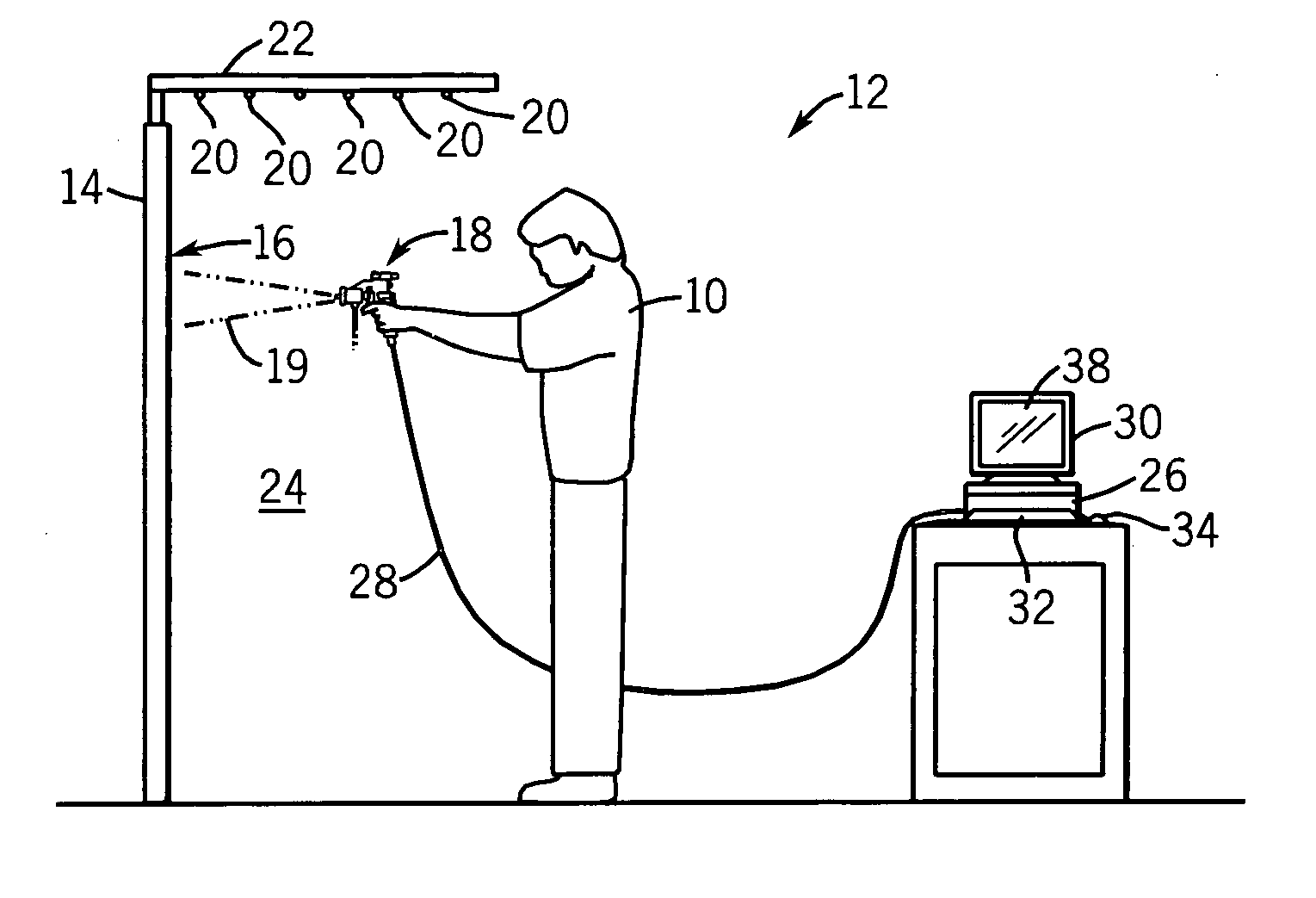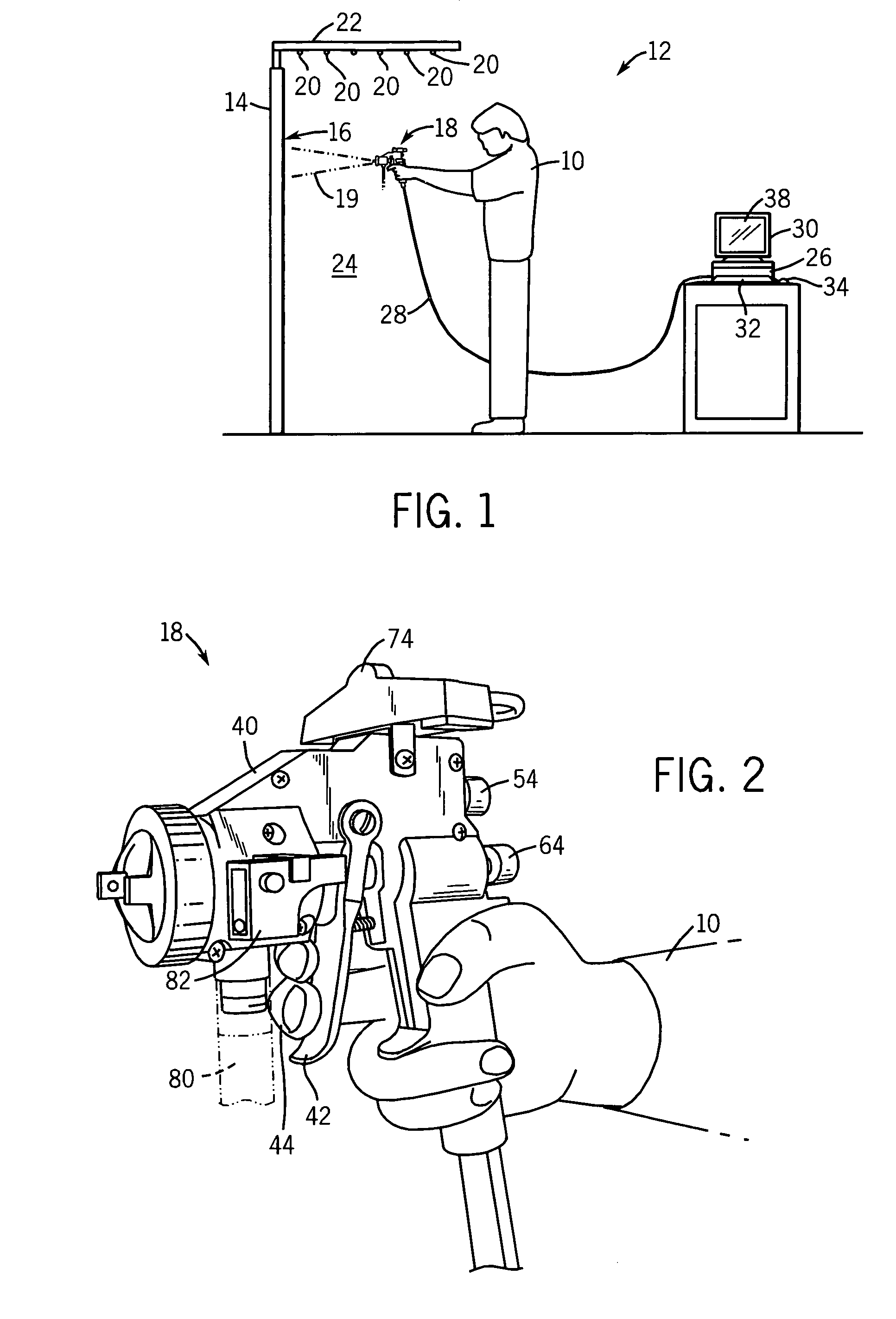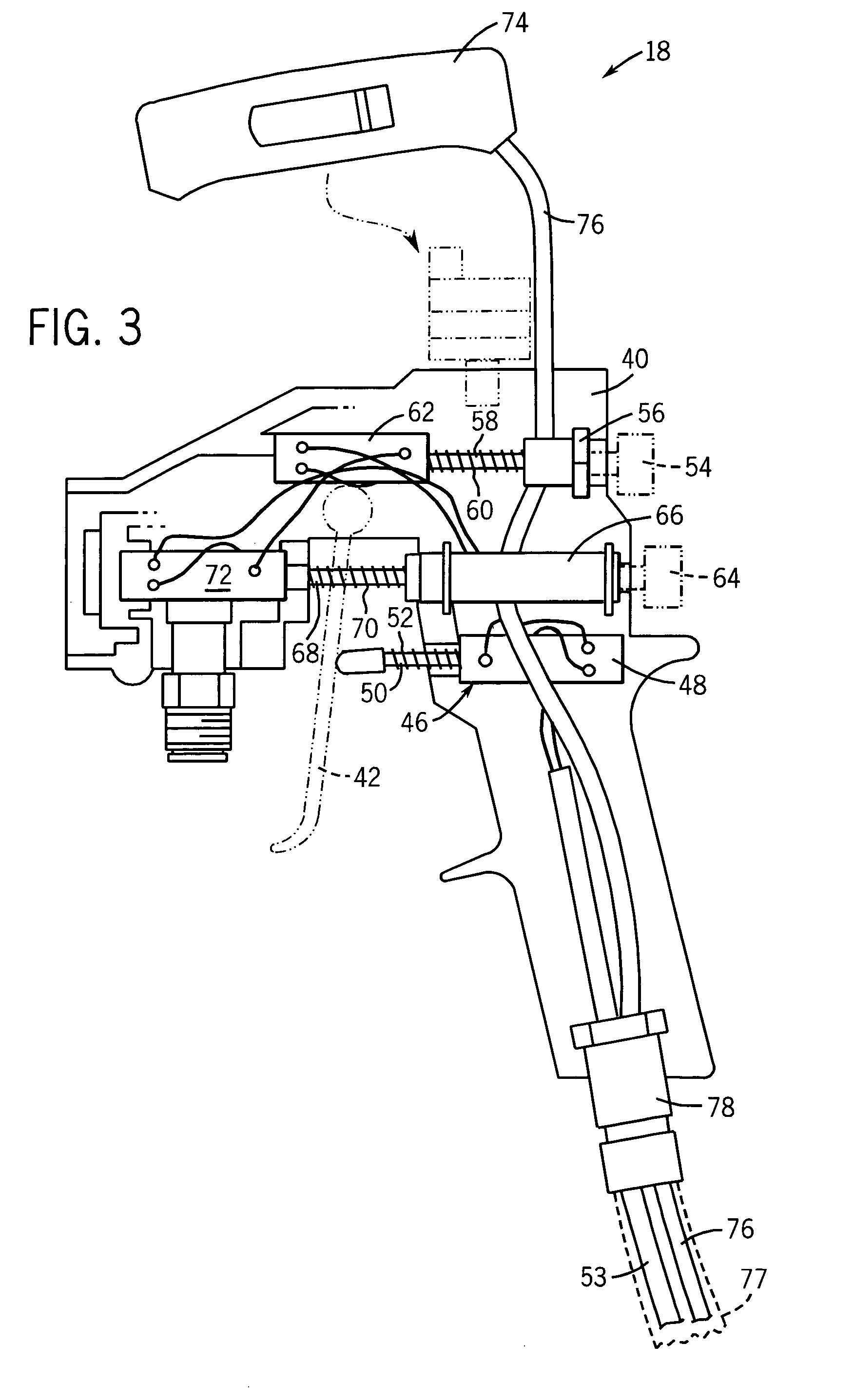Virtual coatings application system
a technology of spray gun and application system, which is applied in the field of simulation spray gun training and performance analysis methods and systems, can solve the problems of uneven wet film build as well as run, difficult for a person to use, uneven spray gun performance analysis, etc., and achieve the effect of enhancing the realism of spray painting
- Summary
- Abstract
- Description
- Claims
- Application Information
AI Technical Summary
Benefits of technology
Problems solved by technology
Method used
Image
Examples
Embodiment Construction
[0031]FIG. 1 shows a person 10 using a virtual coatings application system 12 in accordance with the invention. The virtual coatings application system 12 is intended to be used to teach painting techniques by allowing the user 10 to repeat the painting process an unlimited amount of times without any part preparation or paint mixing. The system 12 helps painters learn the best approach for painting a part, and can be used to screen potential painters for general skills and abilities. By using the virtual coatings application system 12 as part of the normal training routine, a user can gain valuable experience and sharpen their painting technique without even preparing a part for painting, mixing paint, or cleaning up equipment. The system 12 works well for beginner painters as well as experienced painters.
[0032]The virtual coatings application system 12 includes a display screen 14, preferably on a large projection screen television although other types of display screens can be us...
PUM
 Login to View More
Login to View More Abstract
Description
Claims
Application Information
 Login to View More
Login to View More - R&D
- Intellectual Property
- Life Sciences
- Materials
- Tech Scout
- Unparalleled Data Quality
- Higher Quality Content
- 60% Fewer Hallucinations
Browse by: Latest US Patents, China's latest patents, Technical Efficacy Thesaurus, Application Domain, Technology Topic, Popular Technical Reports.
© 2025 PatSnap. All rights reserved.Legal|Privacy policy|Modern Slavery Act Transparency Statement|Sitemap|About US| Contact US: help@patsnap.com



